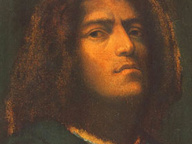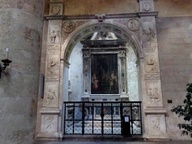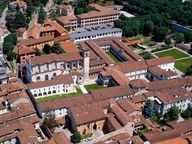So much that it doesn't fit here
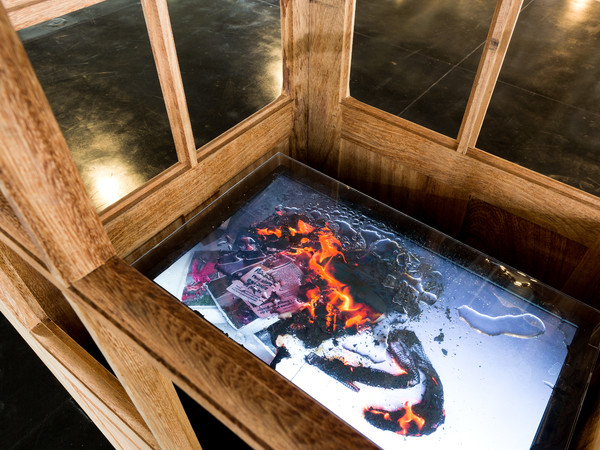
Antonio Manuel, AM Nave, 2013, 4 wood doors, tv, acrylic and video, 76 x 210 x 70 cm. Photo by Sergio Araújo. Courtesy of Antonio Manuel
From 09 Maggio 2015 to 22 Novembre 2015
Venice
Place: Biennale Giardini / Pav. Brazil
Address: Giardini della Biennale
Responsibles: Luiz Camillo Osorio, Cauê Alves
Organizers:
- Luis Terepins
About the artists selected for Brazilian Pavilion at 56th Venice Biennale:
André Komatsu
Komatsu deals with themes of regeneration, focussing particularly on the physical redevelopment of urban space as a wider metaphor for “… man, nature or architecture in a continuous process of change”.
His earliest works and performances tend towards a fairly literal interpretation of these interests by, for example, repurposing the “… materials of construction and deconstruction” into platforms for drawing, painting and assemblage. His current production, however, is more complex both spatially and conceptually.
Antonio Manuel
Antonio Manuel began his work as an artist during the 1960s when he became acquainted with key figures of the Brazilian art scene such as the critic Mário Pedrosa, and artists Lygia Clark, Hélio Oiticica, Lygia Pape and Ivan Serpa. Like many of his contemporaries, such as Cildo Meireles, Artur Barrio, Ana Maria Maiolino, he developed a posture that expanded the limits of art practice, increasingly focusing on the body as a vehicle for his propositions.
Covertly political in nature, Antonio Manuel’s work often arises out of the restrictions imposed by military rule and censorship in the 1960s and 70s and constitute a denial of such restriction. Partly as a consequence of the socio-political environment, partly as a creative strategy, he has worked in the interstices of cultural dissemination appropriating imagery and sometimes the actual circuits of circulation of mass communication. Sensationalist newspaper headlines, censorship, the displacement of marginalized populations, crime and police brutality have featured in Antonio Manuel’s oeuvre, tracing the upheavals of Brazilian history over the last forty years. Often focusing on the relation between outside and inside, his work has consistently questioned consensual notions of art through interventions in museums, newspapers or in the urban environment.
Berna Reale
She studied Art at the Federal University of Pará and participated in several solo and group exhibitions in Brazil and Europe, as Cerveira Biennial (Portugal, 2005), Liege International Biennale of Photography (Belgium, 2006), and in the exhibition “Amazônia – Ciclos da Modernidade” [“Amazon – Modernity Cycles”] at the Centro Cultural Banco do Brasil (Rio de Janeiro, Brazil, 2012). Received the Grand Prize of the Salon Art Pará in Belém (Brazil, 2009), and was selected for the Rumos Visuais – Itaú Cultural (2012-2013) and PIPA (2012-2013) winning PIPA Online 2012 and shortlisted for PIPA 2013, and participated in the exhibition “From the Margin to the Edge”, Somerset House, London (UK, 2012). Reale creates performances and installations.
Violence has been in recent years, her major focus of attention. Reale became a criminal expert of the Scientific Skills Center of the state of Pará (Brazil) and lives, in the Amazon region, close to the most diverse issues of crime and social conflict. Her performances are thought in order to create a provocative reflection noise.
About the curators for the Brazilian Pavilion at 56th Venice Biennale
Luiz Camillo Osorio (Rio de Janeiro, 1963, Brazil), Professor of Aesthetics in the Philosophy Department at PUC-RJ and Head Curator at Museu de Arte Moderna do Rio de Janeiro (MAM-Rio), has done important curatorial work in Brazil and abroad, including Iberê Camargo: Um trágico nos trópicos (Fundação Iberê Camargo/CCBB-RJ), O desejo da forma (Akademie der Künste, Berlin, 2010), MAM 60 (2008) and Haus der Kulturen der Welt (Copa da Cultura Berlin, 2006). He is the author of Razões da crítica (Zahar) and monographic books about Flavio de Carvalho, Abraham Palatnik and Angelo Venosa (CosacNaify).
Cauê Alves (São Paulo, Brazil, 1977) holds a Master’s and Doctorate in Philosophy from the Universidade de São Paulo (USP). He is a Professor at Pontifícia Unversidade Católica de São Paulo (PUC-SP) and Centro Universitário Belas Artes and has worked as Curator at the Museu de Arte Moderna de São Paulo (MAM-SP) Engraving Club since 2006. His past curatorial projects include MAM na OCA: arte brasileira do acervo do Museu de Arte Moderna de São Paulo (2006), Quase líquido (Itaú Cultural, 2008) and Mira Schendel: avesso do avesso (Instituto de Arte Contemporânea, 2010). He was Adjunct Curator at the 8th Bienal do Mercosul (2011) and one of the Curators of the 32nd Panorama da Arte Brasileira – MAM-SP (2011).
André Komatsu
Komatsu deals with themes of regeneration, focussing particularly on the physical redevelopment of urban space as a wider metaphor for “… man, nature or architecture in a continuous process of change”.
His earliest works and performances tend towards a fairly literal interpretation of these interests by, for example, repurposing the “… materials of construction and deconstruction” into platforms for drawing, painting and assemblage. His current production, however, is more complex both spatially and conceptually.
Antonio Manuel
Antonio Manuel began his work as an artist during the 1960s when he became acquainted with key figures of the Brazilian art scene such as the critic Mário Pedrosa, and artists Lygia Clark, Hélio Oiticica, Lygia Pape and Ivan Serpa. Like many of his contemporaries, such as Cildo Meireles, Artur Barrio, Ana Maria Maiolino, he developed a posture that expanded the limits of art practice, increasingly focusing on the body as a vehicle for his propositions.
Covertly political in nature, Antonio Manuel’s work often arises out of the restrictions imposed by military rule and censorship in the 1960s and 70s and constitute a denial of such restriction. Partly as a consequence of the socio-political environment, partly as a creative strategy, he has worked in the interstices of cultural dissemination appropriating imagery and sometimes the actual circuits of circulation of mass communication. Sensationalist newspaper headlines, censorship, the displacement of marginalized populations, crime and police brutality have featured in Antonio Manuel’s oeuvre, tracing the upheavals of Brazilian history over the last forty years. Often focusing on the relation between outside and inside, his work has consistently questioned consensual notions of art through interventions in museums, newspapers or in the urban environment.
Berna Reale
She studied Art at the Federal University of Pará and participated in several solo and group exhibitions in Brazil and Europe, as Cerveira Biennial (Portugal, 2005), Liege International Biennale of Photography (Belgium, 2006), and in the exhibition “Amazônia – Ciclos da Modernidade” [“Amazon – Modernity Cycles”] at the Centro Cultural Banco do Brasil (Rio de Janeiro, Brazil, 2012). Received the Grand Prize of the Salon Art Pará in Belém (Brazil, 2009), and was selected for the Rumos Visuais – Itaú Cultural (2012-2013) and PIPA (2012-2013) winning PIPA Online 2012 and shortlisted for PIPA 2013, and participated in the exhibition “From the Margin to the Edge”, Somerset House, London (UK, 2012). Reale creates performances and installations.
Violence has been in recent years, her major focus of attention. Reale became a criminal expert of the Scientific Skills Center of the state of Pará (Brazil) and lives, in the Amazon region, close to the most diverse issues of crime and social conflict. Her performances are thought in order to create a provocative reflection noise.
About the curators for the Brazilian Pavilion at 56th Venice Biennale
Luiz Camillo Osorio (Rio de Janeiro, 1963, Brazil), Professor of Aesthetics in the Philosophy Department at PUC-RJ and Head Curator at Museu de Arte Moderna do Rio de Janeiro (MAM-Rio), has done important curatorial work in Brazil and abroad, including Iberê Camargo: Um trágico nos trópicos (Fundação Iberê Camargo/CCBB-RJ), O desejo da forma (Akademie der Künste, Berlin, 2010), MAM 60 (2008) and Haus der Kulturen der Welt (Copa da Cultura Berlin, 2006). He is the author of Razões da crítica (Zahar) and monographic books about Flavio de Carvalho, Abraham Palatnik and Angelo Venosa (CosacNaify).
Cauê Alves (São Paulo, Brazil, 1977) holds a Master’s and Doctorate in Philosophy from the Universidade de São Paulo (USP). He is a Professor at Pontifícia Unversidade Católica de São Paulo (PUC-SP) and Centro Universitário Belas Artes and has worked as Curator at the Museu de Arte Moderna de São Paulo (MAM-SP) Engraving Club since 2006. His past curatorial projects include MAM na OCA: arte brasileira do acervo do Museu de Arte Moderna de São Paulo (2006), Quase líquido (Itaú Cultural, 2008) and Mira Schendel: avesso do avesso (Instituto de Arte Contemporânea, 2010). He was Adjunct Curator at the 8th Bienal do Mercosul (2011) and one of the Curators of the 32nd Panorama da Arte Brasileira – MAM-SP (2011).
SCARICA IL COMUNICATO IN PDF
andr komatsu ·
antonio manu l ·
56th international art exhibition la biennale di venezia ·
berna reale ·
antonio manuel andr komatsu berna reale ·
so much that it doesn t fit here
COMMENTI

-
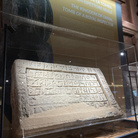 Dal 04 febbraio 2025 al 23 aprile 2025
Roma | Parco archeologico del Colosseo - Curia Iulia
Dal 04 febbraio 2025 al 23 aprile 2025
Roma | Parco archeologico del Colosseo - Curia Iulia
-
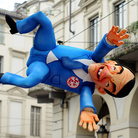 Dal 05 febbraio 2025 al 07 settembre 2025
Bologna | MAMbo - Museo di Arte Moderna di Bologna
Dal 05 febbraio 2025 al 07 settembre 2025
Bologna | MAMbo - Museo di Arte Moderna di Bologna
-
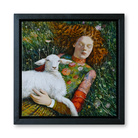 Dal 06 febbraio 2025 al 09 febbraio 2025
Bologna | Palazzo Isolani
Dal 06 febbraio 2025 al 09 febbraio 2025
Bologna | Palazzo Isolani
-
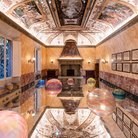 Dal 04 febbraio 2025 al 30 aprile 2025
Bologna | Palazzo Boncompagni
Dal 04 febbraio 2025 al 30 aprile 2025
Bologna | Palazzo Boncompagni
-
 Dal 31 gennaio 2025 al 10 marzo 2025
Mantova | Palazzo Ducale di Mantova
Dal 31 gennaio 2025 al 10 marzo 2025
Mantova | Palazzo Ducale di Mantova
-
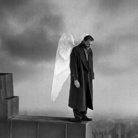 Dal 30 gennaio 2025 al 08 settembre 2025
Milano | Osservatorio Prada
Dal 30 gennaio 2025 al 08 settembre 2025
Milano | Osservatorio Prada
